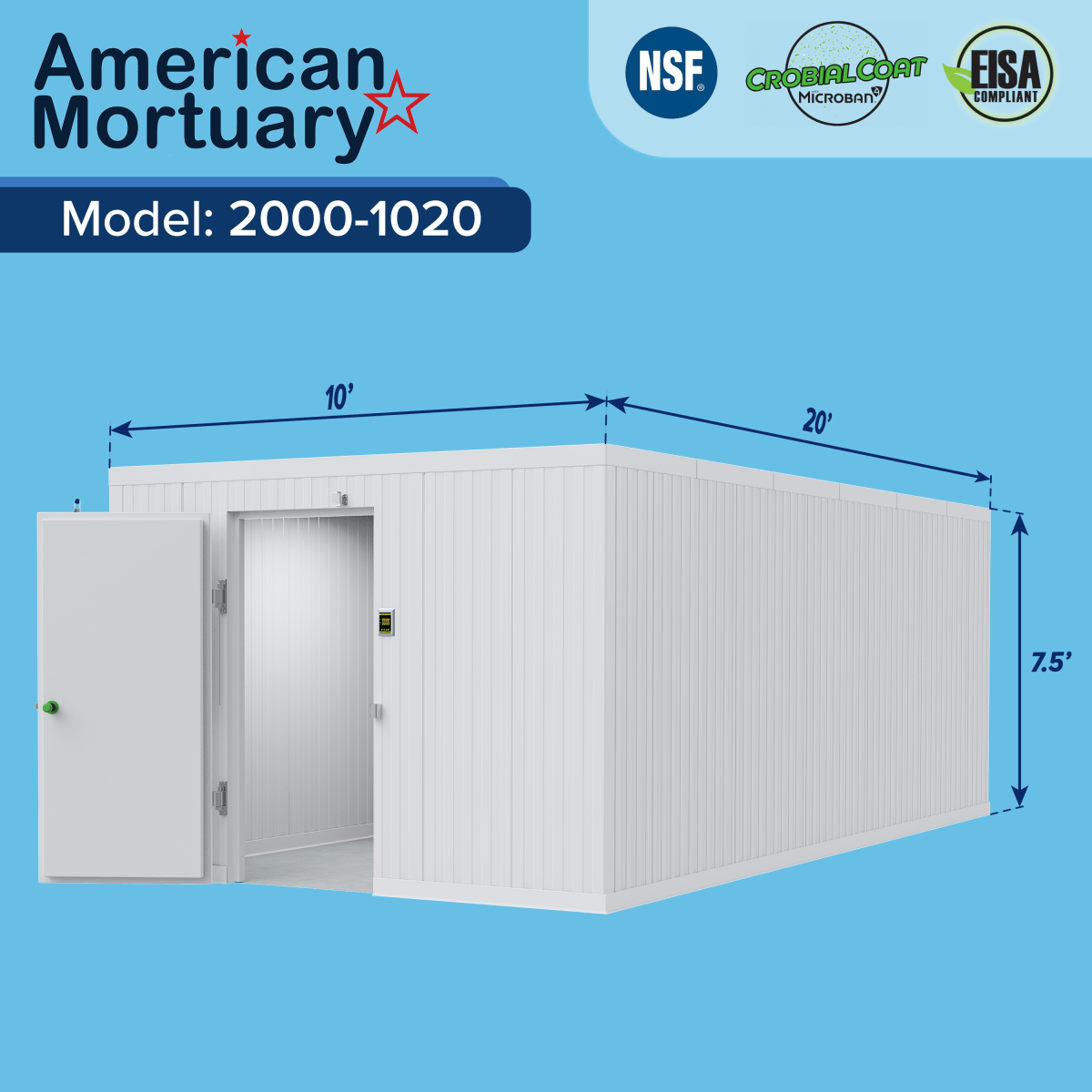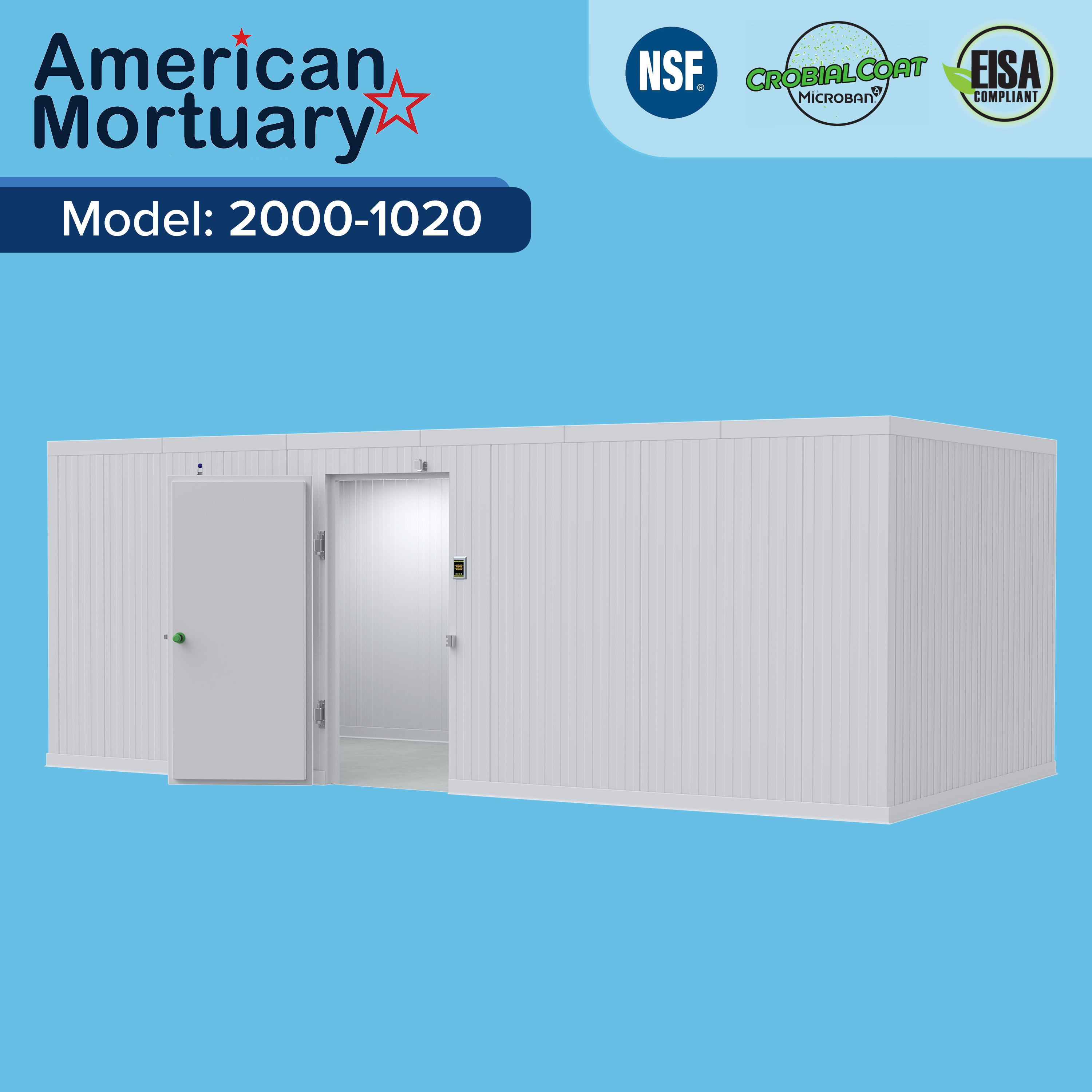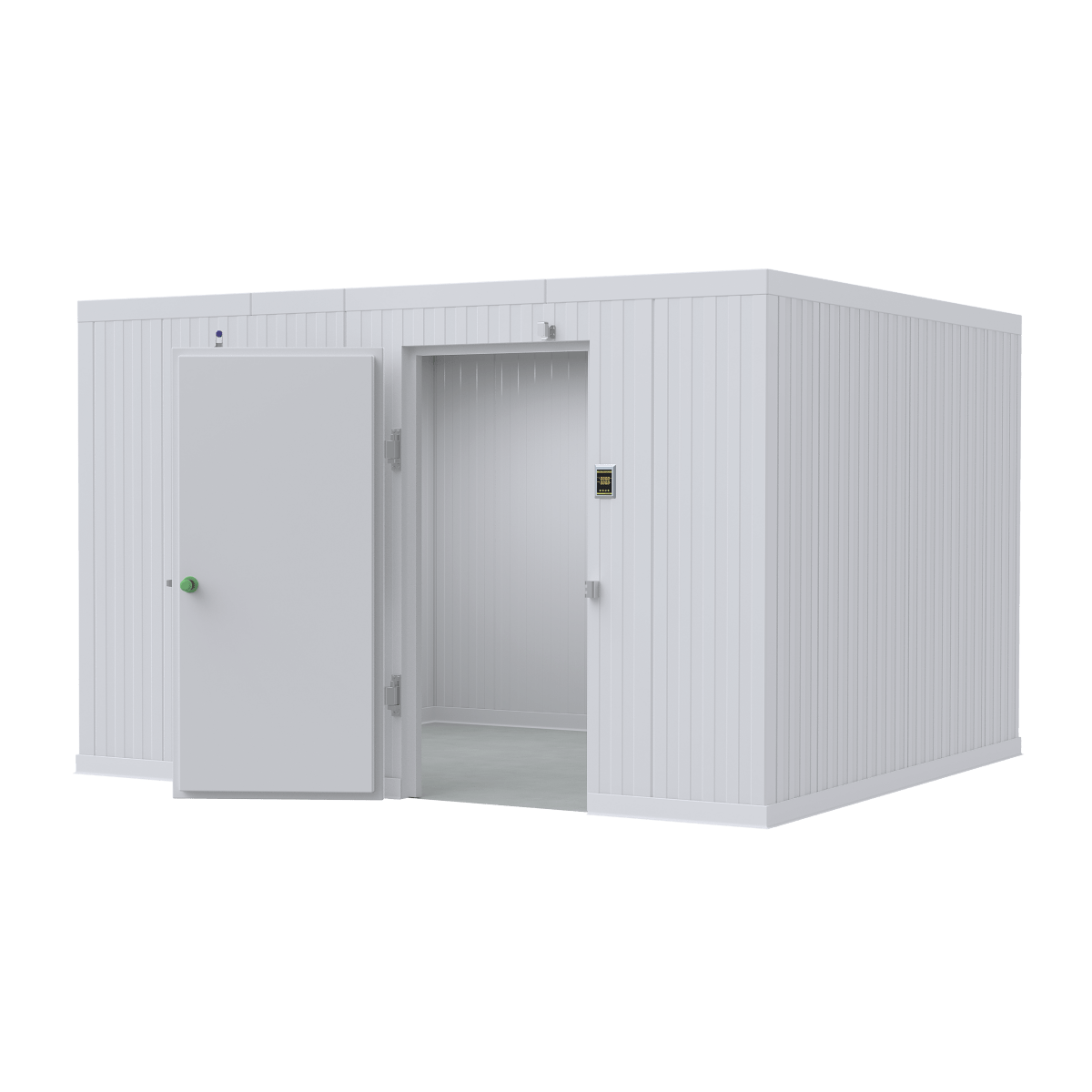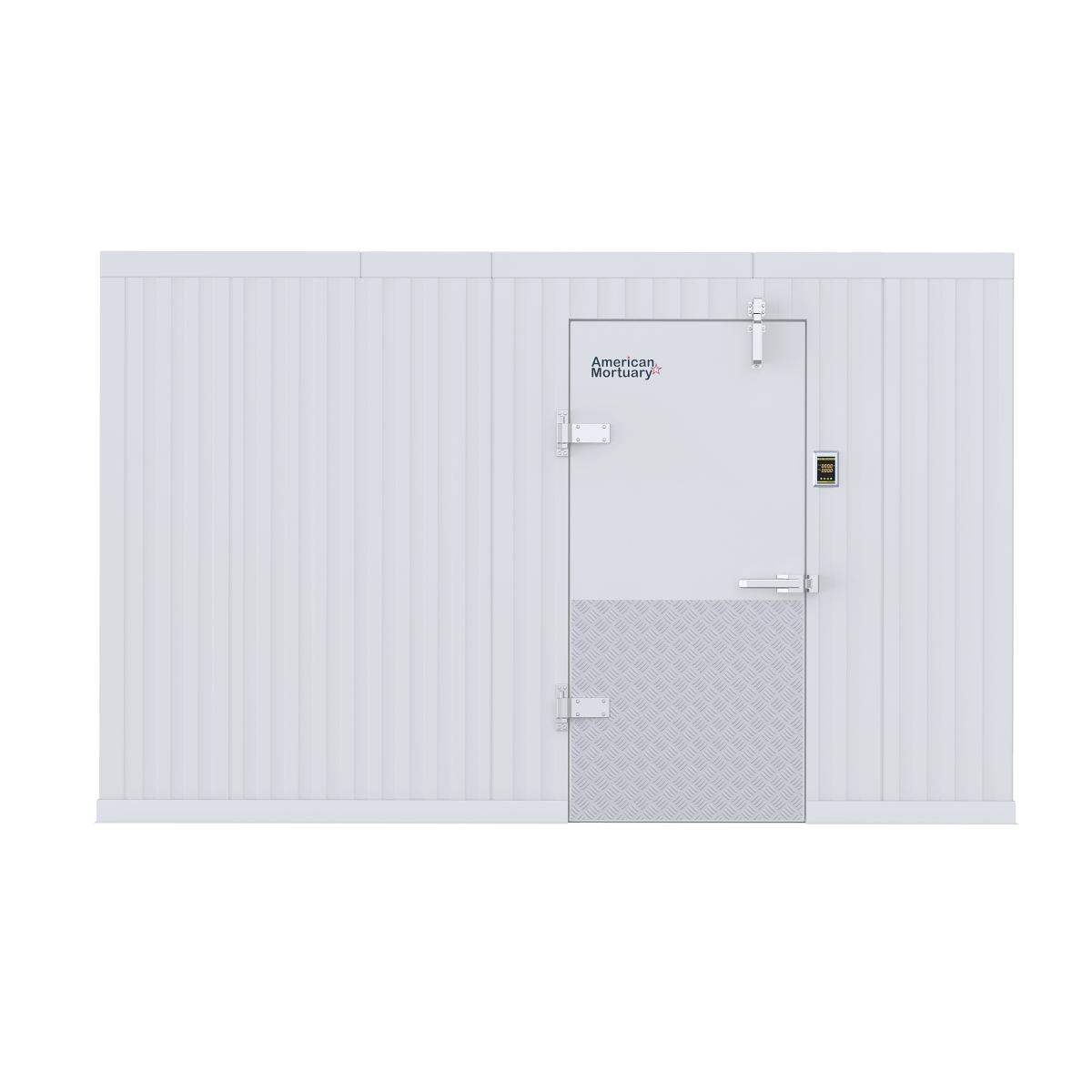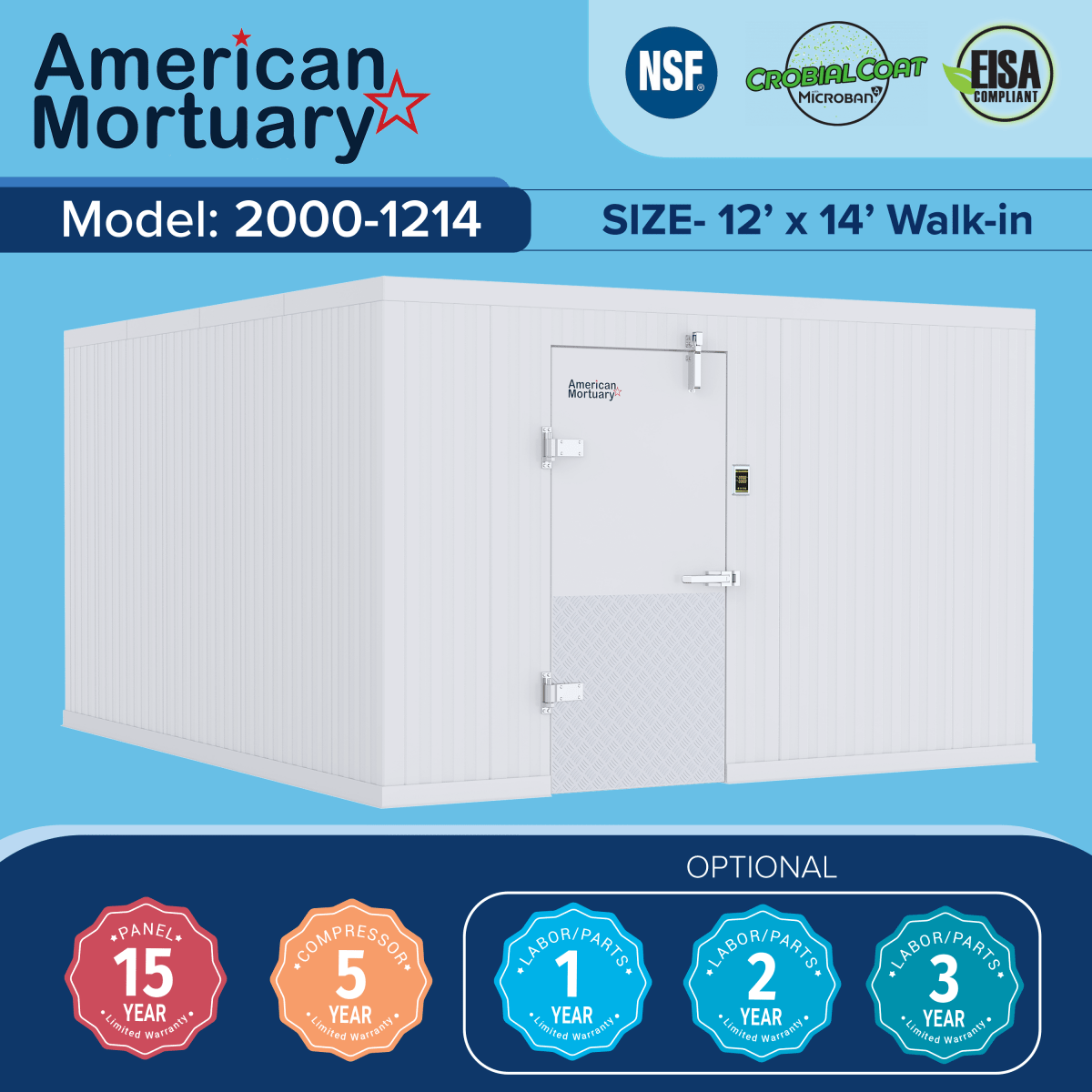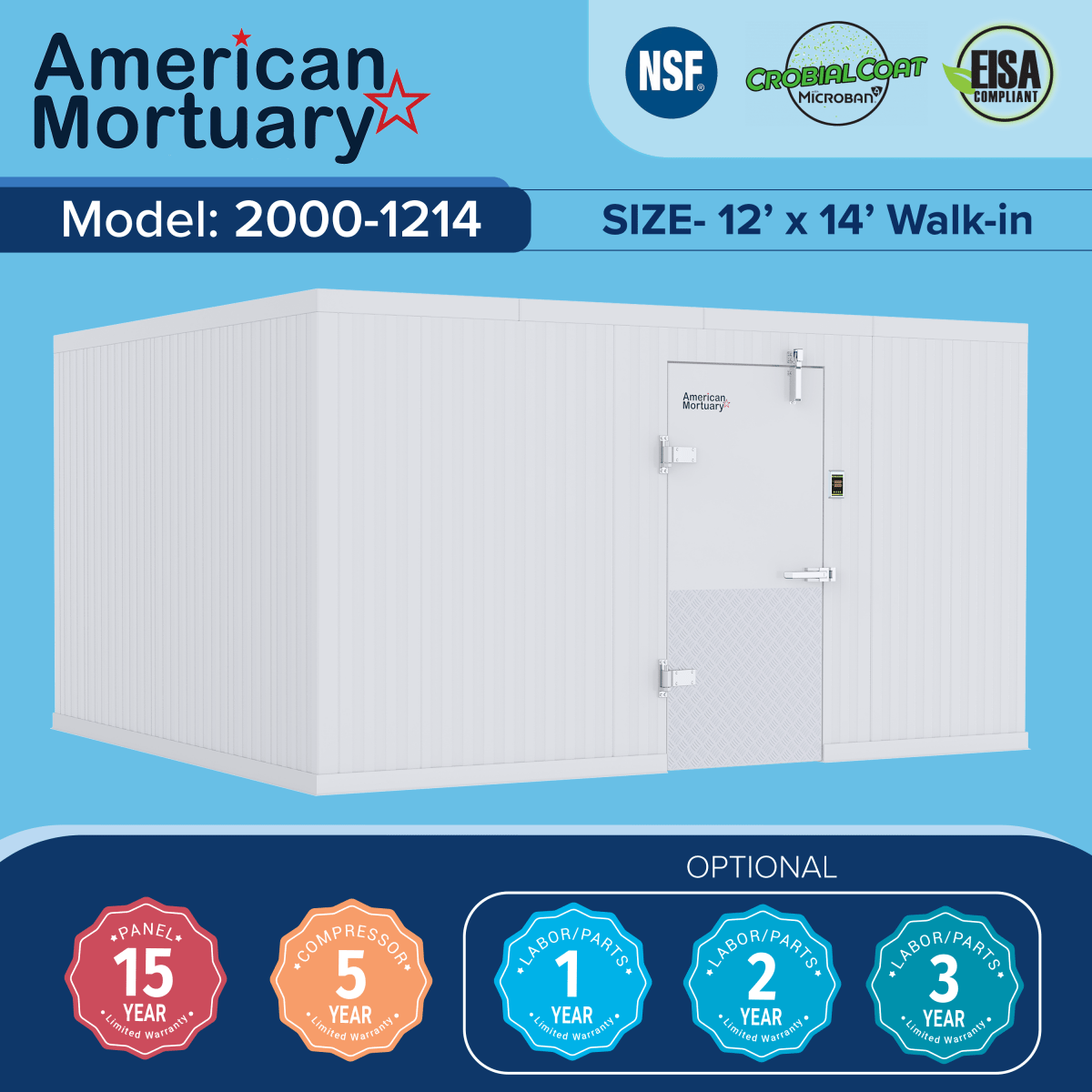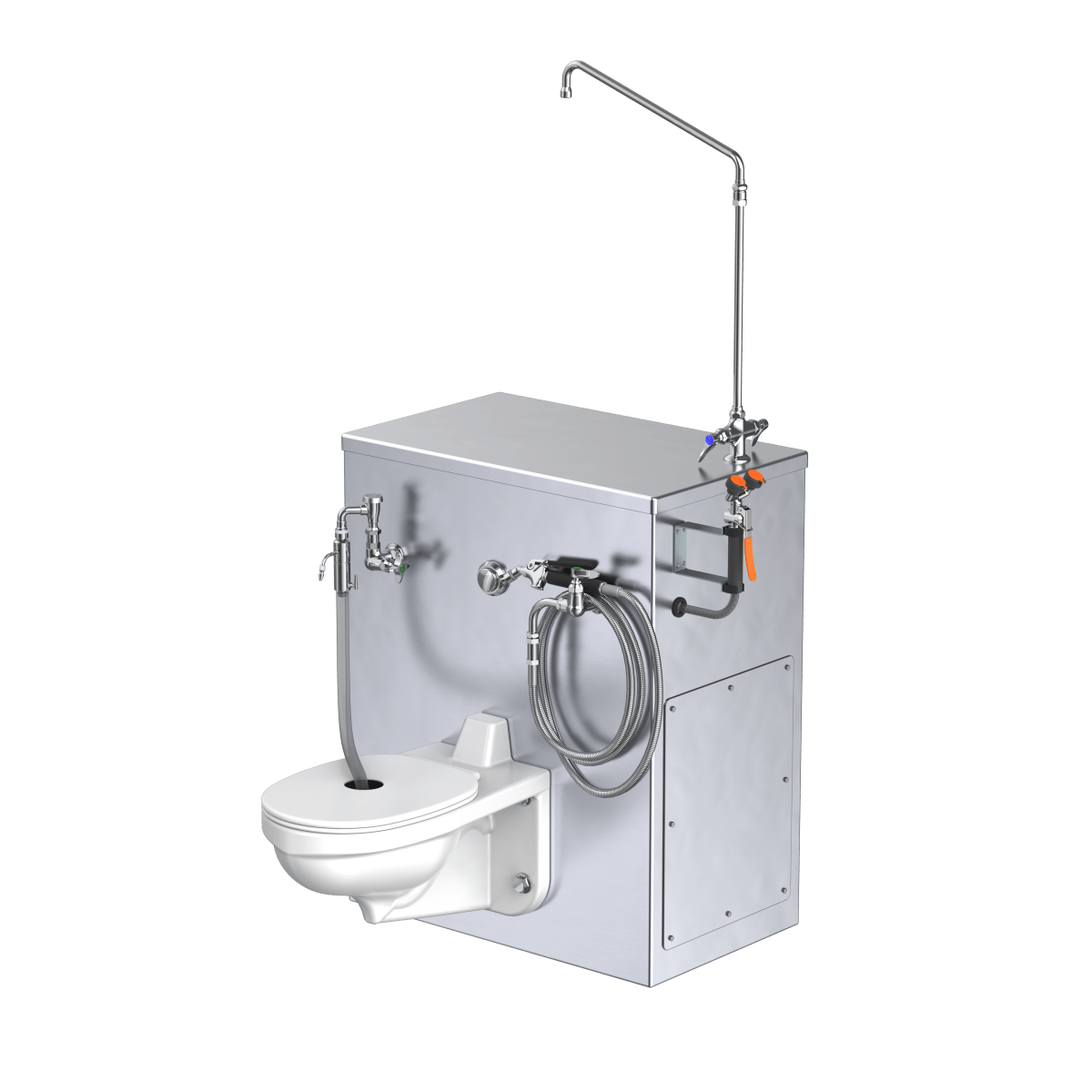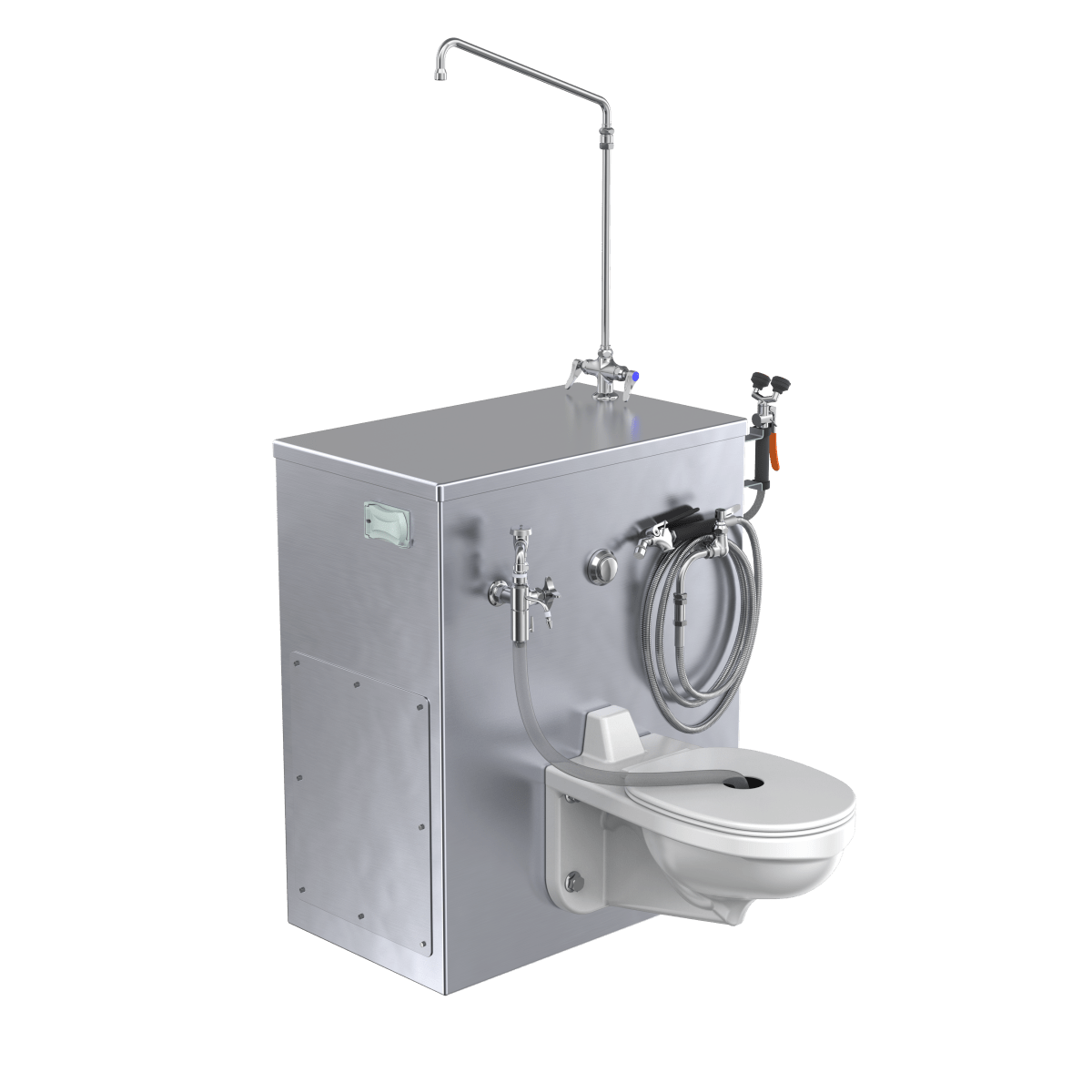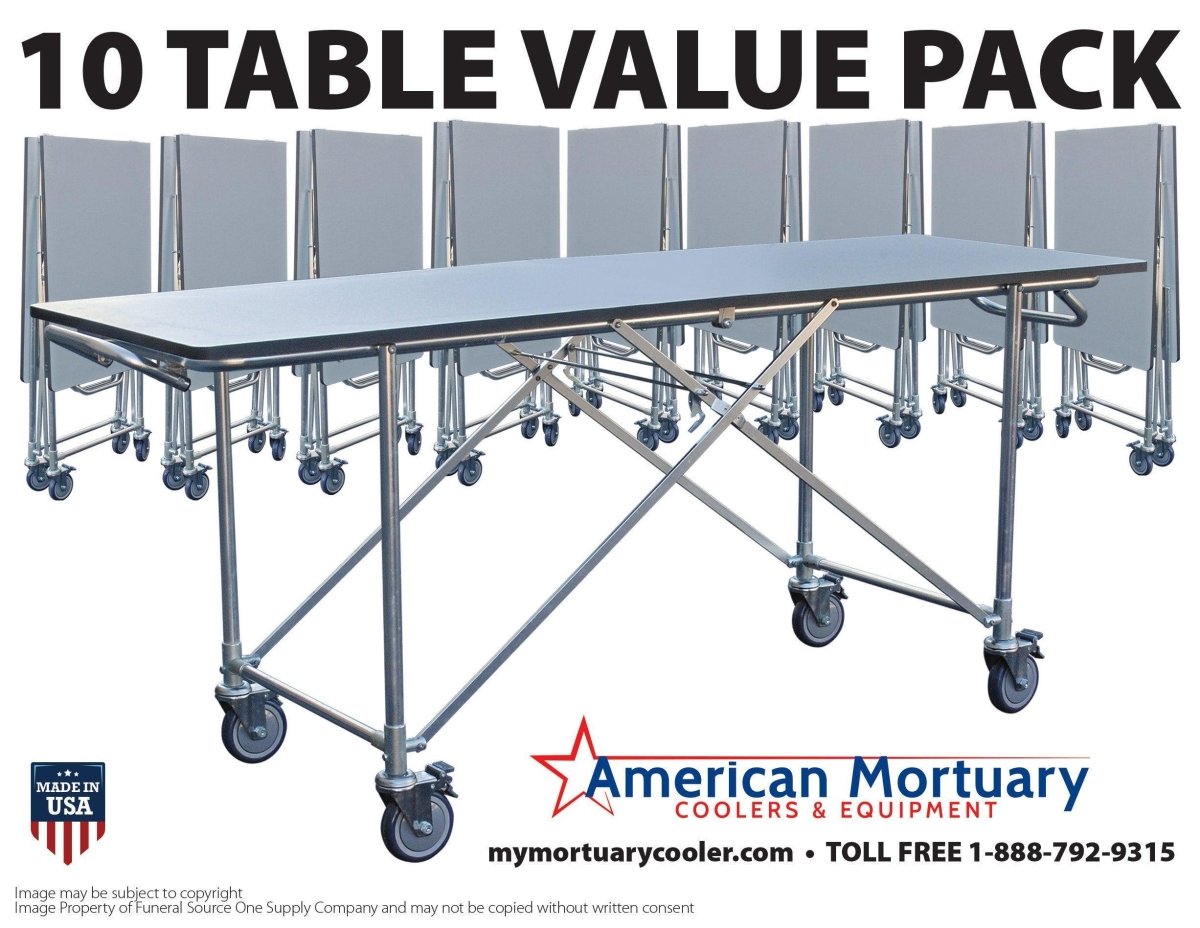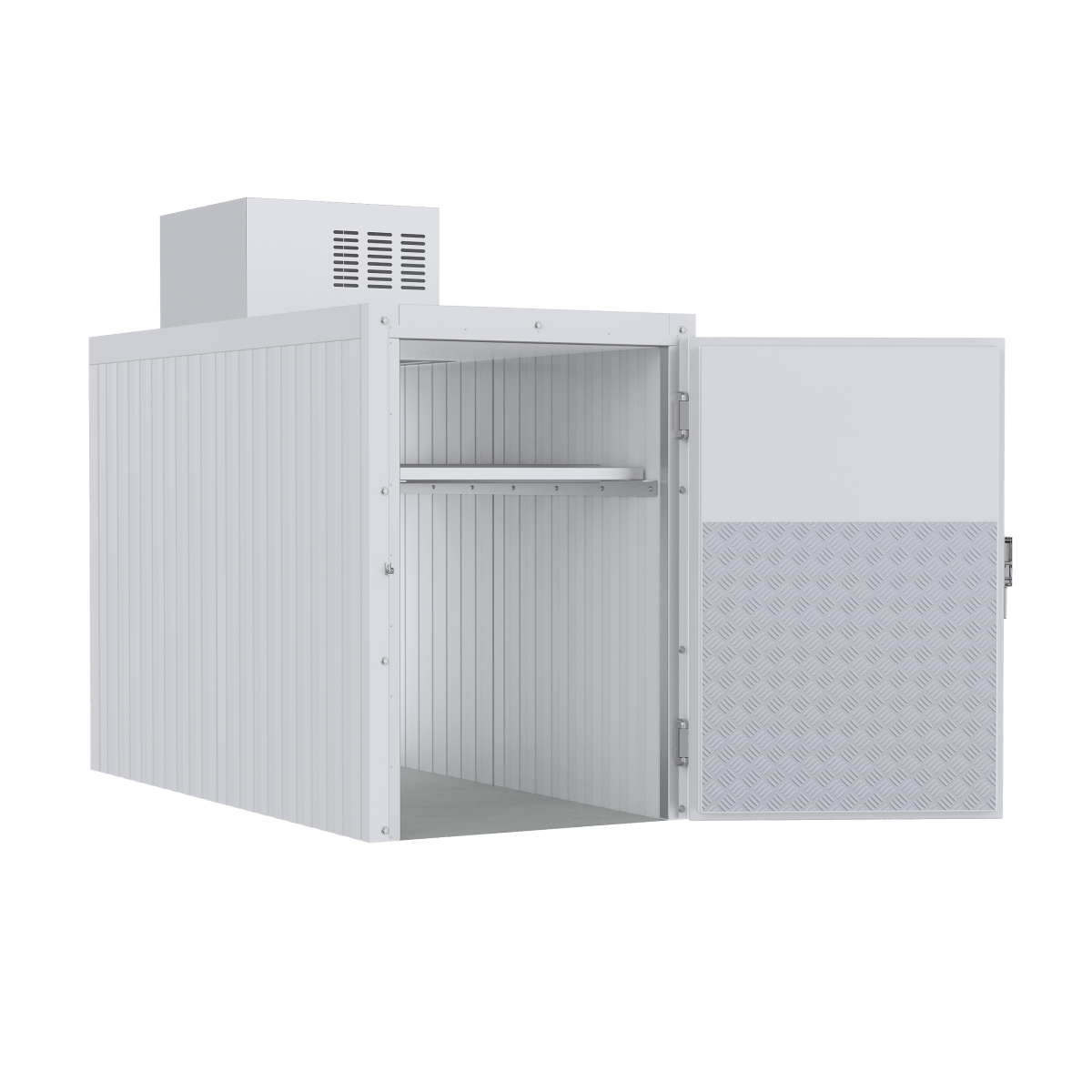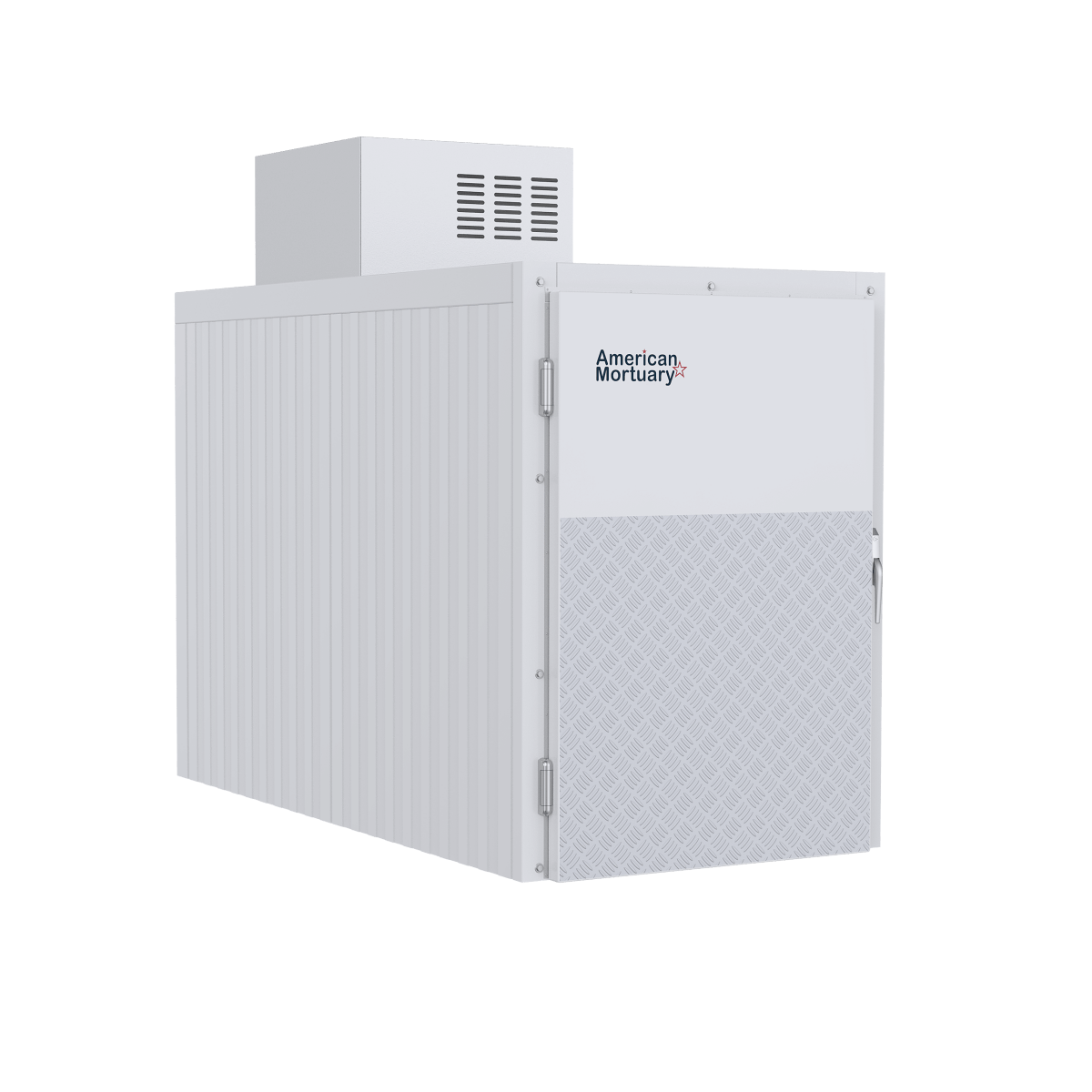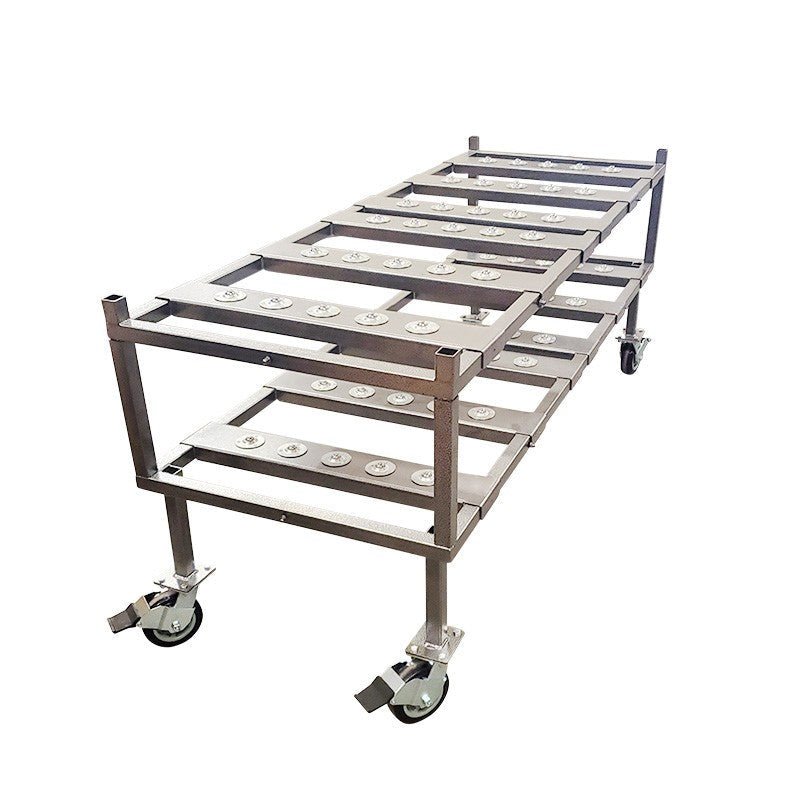The Essential Role of Mortuary Refrigeration in Modern Funeral Care
When a loved one passes away, time stands still for the family—but not for natural processes. This is where mortuary refrigeration systems become essential, working quietly behind the scenes in funeral care to preserve dignity and create time for proper goodbyes.
These specialized cooling units are the unsung heroes of the funeral industry. They preserve human remains in the critical period between death and final disposition, creating a window of time for families to gather, for services to be arranged, and for proper care to be provided with dignity and respect.
The science is straightforward but crucial: most systems maintain temperatures between 2°C to 6°C (standard range) to significantly slow decomposition. In cities with populations exceeding 5,000, laws typically require temperatures between -2°C to 4°C—a regulatory recognition of their public health importance.
"I've become the largest refrigeration facility for human remains in Southern California because of reliable cooling systems," shared one mortuary professional during our research. "It is literally a game changer in the funeral industry."
The versatility of modern systems is impressive. From compact body box refrigerators that accommodate just one or two deceased to expansive walk-in coolers with capacity for 50+ bodies in modular arrangements, there's a solution for every facility size. Mobile units provide flexibility for temporary needs or disaster response situations.
What truly matters in these systems goes beyond just cold air. Stainless steel construction ensures durability and proper sanitation. Digital temperature control provides precision that manual systems simply can't match. Antimicrobial surfaces offer an additional layer of protection for staff and visitors alike.
For funeral directors, having adequate refrigeration isn't just about compliance—it's about service. Without proper cooling, a funeral home cannot accommodate families who need time for relatives to travel, for special service arrangements, or for cultural practices that may require extended timeframes.
At American Mortuary Coolers, we understand that choosing the right refrigeration system directly impacts your ability to serve families during their most difficult moments. Our experience providing these essential systems to funeral homes, hospitals, and medical examiner facilities across the United States has shown us that the right equipment makes all the difference in compassionate death care.

Related content about Mortuary refrigeration systems:
Mortuary Refrigeration Systems 101

Think of mortuary refrigeration systems as the unsung heroes of the funeral industry. These aren't your kitchen refrigerators with a few modifications—they're purpose-built cooling units specifically designed to preserve human remains with dignity and care.
When a loved one passes, time becomes precious. Families need space to gather, make arrangements, and sometimes travel long distances. Our refrigeration systems create that crucial window of time by maintaining temperatures between 2°C and 6°C (35.6°F to 42.8°F), effectively pressing pause on nature's process.
"You know, in this industry, we talk a lot about compassion and dignity," says one of our longtime customers. "But sometimes dignity comes down to practical matters like proper preservation." He's right. In fact, many cities with populations over 5,000 legally require funeral facilities to have refrigeration chambers capable of maintaining temperatures between -2°C and 4°C.
What makes these systems special? For starters, they're built like fortresses against heat. The polyurethane insulation panels (typically 60-80mm thick) limit heat transfer to just about 8W per square meter. Inside, you'll find high-grade 304 stainless steel surfaces that stand up to rigorous cleaning protocols while maintaining a respectful appearance.
Capacity options range from intimate to institutional. Small funeral homes might opt for a compact body box unit holding 2-4 deceased, while medical examiners' offices often require walk-in systems with capacity for 16-30 individuals. Our modular systems can even accommodate 50+ with appropriate racking for facilities with greater needs.
Beyond cooling, many of our systems incorporate thoughtful features like activated carbon filters and ventilation systems that refresh the air 5-6 times hourly, ensuring a clean, odor-free environment for staff and visiting family members.
More info about The Complete Guide to Morgue Cooler Temperature Standards
How Mortuary Refrigeration Systems Prevent Decomposition
Mortuary refrigeration systems work their magic through a combination of scientific principles. It's actually fascinating how effective simple cooling can be when properly applied.
First and foremost, these systems put bacterial activity into slow motion. Bacteria are the primary drivers of decomposition, but at temperatures below 4°C, their metabolism and reproduction rates dramatically decrease. It's like putting them into hibernation mode.
The cold also acts as a brake on enzymatic reactions within the body's cells. After death, cells begin a process called autolysis—essentially digesting themselves from the inside out. Cold temperatures significantly slow this process, helping preserve tissue integrity and natural appearance much longer.
Humidity matters too. Our systems maintain the sweet spot between 85-95% humidity. Too dry, and tissues can become dehydrated; too moist, and you risk unwanted microbial growth. Getting this balance right is crucial for preservation that maintains dignity.
"The difference proper refrigeration makes is night and day," explains a medical examiner who uses our systems. "It gives families options they wouldn't otherwise have, like being able to have an open-casket service even when arrangements take longer than expected."
Core Components at a Glance
Behind the scenes, several critical components work together to create the perfect preservation environment in our mortuary refrigeration systems.
The compressor unit serves as the heart of the system, typically housed in a separate technical room or mounted externally to minimize noise in sensitive areas. Many of our customers appreciate the independent centrifugal condenser units that discharge hot air away from technical rooms, improving overall efficiency.
Inside the refrigerated space, the evaporator quietly absorbs heat from the chamber. We commonly use split-type refrigeration units with thoughtful features like defrost drains and external temperature sight glasses for easy monitoring without opening doors.
Temperature control is managed by a digital thermostat that maintains precision to within ±1°C. Gone are the days of analog dials and guesswork—our digital displays show real-time conditions and allow for programmable setpoints and automatic defrost cycles.
Safety features include alarm systems that alert staff if temperatures drift outside acceptable ranges. For added peace of mind, advanced models can send notifications via text message or email, ensuring someone is always informed even during off hours.
For facilities with regulatory requirements, built-in data loggers record temperature history, with some systems offering 30-day tracking accessible through secure mobile apps.
Finally, the stainless steel racking systems provide dignified, organized storage. Options range from telescoping slide-out trays for easy access to heavy-duty stationary racks for safer loading and unloading. We even offer specialized bariatric racks designed to safely accommodate larger individuals with the same level of care and respect.
At American Mortuary Coolers, we understand that while this equipment serves a technical purpose, it's ultimately about providing care during life's most difficult moments. That's why every component meets the highest standards for durability, performance, and compliance—because some things are too important to compromise on.
Comparing Core System Types
When selecting the right mortuary refrigeration system for your facility, understanding the different types available is crucial. Each system type offers distinct advantages depending on your specific needs, space constraints, and budget.
| System Type | Capacity Range | Best For | Key Advantages | Considerations |
|---|---|---|---|---|
| Walk-In Coolers | 4-50+ bodies | Hospitals, Medical Examiners, Large Funeral Homes | Maximum capacity, Modular expansion, Full-body access | Requires dedicated space, Higher initial cost |
| Body Box Refrigerators | 1-23 bodies | Small-Medium Funeral Homes, Limited Space Facilities | Compact footprint, Lower initial cost, Self-contained units | Limited access to remains, Fixed capacity |
| Mobile/Temporary Units | 4-24 bodies | Disaster Response, Overflow Needs, Remote Locations | Rapid deployment, Portability, No permanent installation | Higher operating costs, Temporary solution |
Walk-In Coolers
Walk-in coolers represent the most versatile and expandable option for facilities with higher capacity needs. These systems use prefabricated modular panels that allow for easy assembly, disassembly, relocation, or expansion as needs change.
"Walk-in coolers and freezers provide your facility with the best solution to use space and maximize cadaver storage," notes one manufacturer. These systems typically feature:
- 4-inch thick high-density insulated panels (R-value typically 25-32)
- NSF-certified doors and panels for hygiene compliance
- OSHA-compliant safety release handles
- Adjustable cantilever storage racks that maximize accessibility
- Options for roll-in carts, side-loading racks, or specialized storage solutions
At American Mortuary Coolers, our walk-in systems are built with American-made components and can be customized to fit virtually any space configuration. Our panels comply with the Federal Energy Independence & Security Act of 2007 and meet UL-NSF approval standards.
Body Box Refrigerators
Body box refrigerators offer a compact solution for facilities with more limited space or budget constraints. These units come in various configurations:
- Front-loading units with individual compartments
- Side-loading designs for facilities with specific space constraints
- Roll-in models that accommodate standard mortuary cots
- Upright configurations that maximize floor space efficiency
One funeral director shared: "I have been using a homemade 8×8 cooler with a 12000 BTU AC unit since earlier this year. The system has been working great, keeping the cooler at 37 to 38 degrees F."
Body box refrigerators typically offer capacities ranging from 2 to 23 bodies, with options for bariatric storage in specialized units. Many are 100% self-contained—requiring no special drainage or electrical systems beyond a standard 110v outlet.
Mobile and Temporary Systems
For emergency situations, overflow needs, or facilities requiring flexibility, mobile and temporary mortuary refrigeration systems provide innovative solutions:
- Flexmort AirCool: A portable "pop-up" mortuary that can be quickly erected, cooled, and dismantled. Available in capacities of 4, 8, 12, 16, and 24 bodies.
- MERC System: The first completely portable, scalable direct-contact liquid cooling system for human remains.
- Rapid-Deploy Coolers: Collapsible systems designed specifically for surge capacity and emergencies.
- CoolBot Systems: Innovative solutions that use standard air conditioners with special controllers to create affordable walk-in coolers.
Lyn Anderson from Watford General Hospital notes: "We opted for Flexmort's AirCool system as it is easy to assemble, has large A4 pockets to hold body identification documents, and fully rollered racking."
Choosing Mortuary Refrigeration Systems for Special Cases
Mortuary refrigeration systems must sometimes accommodate special requirements beyond standard body storage:
Bariatric Storage
With increasing bariatric cases, specialized storage solutions have become essential:
- Bariatric-capable units accommodate individuals weighing up to 256 kg (40 stone)
- Extra-wide compartments and reinforced trays provide dignified storage
- Specialized lift equipment may be integrated for safe handling
"The bariatric version accommodates up to 2 individuals weighing 256 kg/40 st," notes one manufacturer's specification.
Infectious Disease Containment
For cases involving infectious diseases, specialized containment features are available:
- Negative-pressure chambers with HEPA filtration
- Sealed compartments with separate ventilation systems
- Antimicrobial interior surfaces (like SmartProtec® finishes) that eliminate bacterial growth
- Special access protocols and isolation capabilities
Direct-Contact Cooling Systems
For specialized preservation needs or field applications:
- The MERC System uses direct-contact liquid cooling technology
- Provides more efficient temperature transfer than air cooling
- Allows for portable, scalable deployment in various settings
DIY and Alternative Solutions
For budget-conscious facilities, alternative approaches have emerged:
- CoolBot technology allows standard window air conditioners to be repurposed for mortuary cooling
- One user reported: "With the 8'x12' CoolBot Walk-In Cooler for about $5K, I've got capacity for twenty-five people."
- These solutions can provide significant cost savings while maintaining appropriate temperatures
Modular & Expandable Designs
One of the most significant advances in mortuary refrigeration systems is the development of truly modular and expandable designs:
- Cam-Lock Panels: Modern walk-in coolers use precision-formed panels with cam-lock connections that allow for quick assembly and future expansion.
- Plug-and-Play Condensers: Self-contained refrigeration units can be easily relocated or replaced without specialized technicians.
- Add-On Bays: Some systems allow additional storage bays to be connected to existing units as capacity needs grow.
- Reconfigurable Racking: Interior storage systems can be reconfigured to accommodate changing needs without replacing the entire unit.
As one manufacturer explains: "The prefabricated modular panel design allows easy assembly, relocation or expansion of walk-in units." This flexibility is particularly valuable for growing facilities or those with changing needs.
At American Mortuary Coolers, we specialize in designing systems that can grow with your facility. Our modular approach means you can start with what you need today and expand as your requirements change, without replacing your entire investment.
Critical Specifications, Sustainability & Innovations

When I talk with funeral directors about mortuary refrigeration systems, they often tell me they're overwhelmed by the technical specifications. Let's break down what really matters in terms you can use to make smart decisions for your facility.
Temperature precision is absolutely critical in our industry. Today's best systems maintain temperatures within ±1°C of your setpoint – that's the difference between proper preservation and potential problems. Modern digital controllers use multiple sensors throughout the unit to ensure every corner stays perfectly cooled. I've seen how this level of precision gives funeral directors peace of mind, especially when they're caring for loved ones over extended periods.
The insulation in your cooler does more than just keep the cold in – it's directly tied to your energy bills and system longevity. Quality systems use polyurethane foam panels between 60-80mm thick, providing R-values from 25 to 32. As one technical guide notes, "Insulating panels of 60–80 mm thickness limit thermal gains to approximately 8 W/m²." In plain English? Better insulation means lower energy costs and more consistent temperatures.
The materials used in mortuary refrigeration systems need to stand up to daily use while maintaining perfect hygiene. Type 304 stainless steel interiors have become the gold standard due to their exceptional durability and ease of cleaning. For exterior finishes, you have choices ranging from practical stucco-embossed white galvanized steel to premium stainless options. Floors are engineered to support at least 150 kg per tray – important when you consider the range of cases you'll handle over the system's lifetime.
Sustainability has become increasingly important to funeral homes looking to reduce both their environmental impact and operating costs. Energy-efficient components with ENERGY STAR ratings can significantly reduce power consumption. Many of our customers are surprised to learn about the evolution in refrigerants – newer systems use options like R290 (propane) or CO₂ with dramatically lower environmental impact than older chemicals. Some forward-thinking facilities are even installing solar-ready systems to further reduce their carbon footprint.
"We switched to a system with R-134a refrigerant last year," one funeral director told me recently. "Not only is it better for the environment, but our energy costs dropped by almost 20%."
Advanced Control & Monitoring
The days of walking into the preparation room to check a basic thermometer are long gone. Today's mortuary refrigeration systems connect to your smartphone and send alerts before small issues become big problems.
Wi-Fi connectivity now allows you to monitor temperatures from anywhere – whether you're at home or on vacation. Cloud dashboards provide real-time status updates, while automatic SMS and email alerts notify you immediately if temperatures drift outside acceptable ranges. I've heard from numerous funeral directors how this technology has saved them from potential disasters during power outages or equipment hiccups.
Modern systems also maintain detailed digital records automatically. This continuous data logging tracks 30-day temperature histories, creating exportable reports that satisfy even the strictest regulatory requirements. Multiple redundant temperature probes ensure reliability, giving you confidence that your system is working perfectly even when you can't physically check it.
As one manufacturer notes, "Data-logging LCD controllers with RS-485 communication for PC integration" have become standard features in premium systems. This technology delivers both peace of mind and regulatory compliance with minimal effort on your part.
Emerging Technologies
The field of mortuary refrigeration continues to evolve with fascinating innovations that solve real-world problems for funeral professionals.
The MERC (Mortuary Improved Remains Cooling) System represents a significant breakthrough, using direct-contact liquid cooling rather than traditional air cooling. This approach transfers temperature more efficiently and can be deployed anywhere – perfect for disaster response or temporary needs. The completely portable, scalable design works well when traditional fixed systems aren't practical.
For budget-conscious facilities, CoolBot technology has been a game-changer. This innovative approach uses specialized controllers with standard window air conditioners to create affordable walk-in coolers. One funeral director I know built an 8'x12' walk-in cooler for approximately $5,000 – a fraction of traditional costs. He told me, "With the CoolBot Walk-In Cooler, I've got capacity for twenty-five people at a price I could actually afford as a small rural funeral home."
Power outages used to strike fear in the hearts of funeral directors, but new backup systems using phase-change materials can maintain temperatures for 12-24 hours without electricity. These systems automatically "recharge" when power returns, providing passive cooling during outages without the noise and maintenance of generators.
For challenging environments like disaster response, AirCool Extreme Technology maintains internal temperatures at 5°C even when outside temperatures reach a scorching 40°C. These portable, rapidly deployable units have proven invaluable during natural disasters and in field operations.
At American Mortuary Coolers, we carefully evaluate these innovations, incorporating proven technologies that improve reliability and performance. We believe in balancing cutting-edge features with the rock-solid dependability funeral professionals require.
More info about polyurethane insulation
Installation, Maintenance & Regulatory Compliance

Setting up and maintaining a mortuary refrigeration system isn't just about plugging in a unit and walking away. It requires thoughtful planning, regular care, and a solid understanding of the rules that govern these essential systems.
Installation Considerations
Before your new cooling system arrives, there's important groundwork to be done. Think of it as preparing a foundation for your home—get it right, and everything else falls into place.
First, you'll need to ensure your space is ready. Most systems need room to breathe—typically at least 12 inches of clearance around condensing units for proper airflow. Your floor needs to be strong enough too, as these systems can get heavy, especially when fully loaded. Each tray typically supports about 150 kg (330 lbs), and that adds up quickly in multi-body units.
Power requirements vary widely between models. Smaller body box refrigerators might run on standard 110V household circuits, but larger walk-in coolers typically need 208-230V power with dedicated circuits. As one funeral director told us, "I learned the hard way that electrical planning is crucial—we had to bring in an electrician to upgrade our panel before installation could even begin."
Don't forget about drainage! Condensate water needs somewhere to go, and proper drainage prevents puddles and potential slip hazards. Some facilities require floor drains, while others can use condensate pumps to direct water to existing plumbing.
The assembly process itself is surprisingly straightforward for modular systems. Modern walk-in coolers use clever cam-lock connections that allow panels to fit together securely without specialized tools. A typical installation team of 2-3 people can assemble a standard walk-in unit in just 1-2 days. The process flows from floor panels (if included) to walls, ceiling, doors, and finally the refrigeration equipment and interior racking.
Maintenance Requirements
Think of your mortuary refrigeration system like a car—regular maintenance keeps it running smoothly and prevents costly breakdowns. A consistent maintenance schedule is your best insurance against failure when you need the system most.
Daily checks are simple but crucial. Make temperature monitoring part of your morning routine—just a quick glance at the display to ensure everything's within range. While you're there, give door seals a visual inspection. Cracked or damaged gaskets can let cold air escape and make your system work harder than necessary.
Monthly maintenance goes a bit deeper. Take time to inspect hinges and latches, which can wear with regular use. The condenser coils (typically located on the exterior unit) need regular cleaning to remove dust and debris that can reduce efficiency. As one maintenance technician explained to me, "Dirty condenser coils are like trying to breathe through a straw—the system works twice as hard and gets half the results."
Quarterly service is where things get more technical. This is often when you'll want a qualified technician to check refrigerant levels, test system pressure, and calibrate temperature controls. Many of our customers at American Mortuary Coolers opt for service contracts that include these regular check-ups, giving them peace of mind and extending the life of their equipment.
Annual professional service provides a comprehensive health check for your entire system. This typically includes refrigerant leak detection, electrical safety inspection, and performance testing of all components. Consider it your system's yearly physical—catching small issues before they become major problems.
Regulatory Compliance
Navigating the regulatory landscape for mortuary refrigeration systems can feel like wading through alphabet soup—OSHA, NSF, UL, HTA, and more. But these standards exist for good reason: to ensure safety, efficiency, and proper care for the deceased.
In the United States, requirements vary significantly by state and even by city. Many jurisdictions follow the general rule that cities with populations over 5,000 must have refrigeration facilities capable of maintaining temperatures between -2°C and 4°C (28°F to 39°F). California's Title 22 provides some of the most detailed guidelines, specifying everything from temperature ranges to monitoring requirements.
Beyond local codes, national standards apply as well. OSHA requirements focus on worker safety, including internal release mechanisms that prevent accidental entrapment. NSF certification ensures your equipment meets food-grade equivalent sanitation standards—important when dealing with public health concerns.
Energy efficiency has become increasingly important too. The Federal Energy Independence & Security Act of 2007 established minimum efficiency standards that all commercial refrigeration must meet. Choosing ENERGY STAR certified equipment where available can reduce operating costs while ensuring compliance.
Construction materials matter as well. Insulation must meet ASTM E84 standards for smoke and flame spread, especially important in facilities that operate 24/7. In seismically active regions, proper anchoring is required to prevent tipping during earthquakes.
Regional Codes Governing Mortuary Refrigeration Systems
Mortuary refrigeration systems face a patchwork of regulations that can vary dramatically depending on where you're located. Understanding these differences is crucial for compliance and proper operation.
In Texas, the Funeral Service Commission has specific guidelines for funeral home refrigeration, while New York State's Department of Health takes a different approach with its own unique requirements. This regulatory variety means that a system perfectly compliant in one state might need modifications to meet codes in another.
European standards tend to be more uniform but equally stringent. The EU Directive 2003/88/EC establishes workplace safety standards that apply to mortuary facilities, while the UK's Human Tissue Authority provides detailed guidance specifically for the storage of human remains.
Special circumstances require additional compliance measures. When dealing with infectious remains, CDC guidelines and WHO protocols may supersede standard regulations. As we saw during recent public health emergencies, these requirements can change rapidly in response to emerging threats.
"Staying current with regulations isn't optional—it's essential," notes one funeral director we work with. "During inspections, documentation of temperature monitoring is often the first thing they ask for."
Service & Lifecycle Costs
Understanding the total cost of owning a mortuary refrigeration system helps you make smarter long-term decisions. The initial purchase price is just the beginning of the story.
Quality systems come with substantial warranty protection. You should expect a 10-15 year warranty on structural components like walls and ceiling panels, 5 years on mechanical parts, and at least 1 year on labor. Some manufacturers offer extended warranties on critical components like compressors—often worth the investment for peace of mind.
Energy costs form the largest ongoing expense. Small body box units typically consume 4-6 kWh per day, while larger walk-in systems might use 15-25 kWh daily. At average electricity rates, this translates to roughly $1-$6 per day depending on system size—not insignificant over the 15-20 year lifespan of the equipment.
When considering upgrades or replacements, look beyond the sticker price. A system that costs 20% more upfront but uses 30% less energy will save you money in the long run. Similarly, modular systems that can expand as your needs grow might cost more initially but save you from having to replace the entire unit later.
As one satisfied customer shared: "With the 8'x12' CoolBot Walk In Cooler for about $5K, I've got capacity for twenty-five people. I've become the largest refrigeration facility for human remains in Southern California. It is literally a game changer in the funeral industry."
Quick FAQ Corner
How long does it take to assemble a modular walk-in cooler? Most standard units can be up and running in 1-2 days with a team of 2-3 people. Some systems, like the Flexmort AirCool, are even faster—operational within minutes of unpacking.
How often should temperature alarms be calibrated? Quarterly calibration by qualified personnel ensures your alarms will trigger exactly when needed—not too early (causing false alarms) and certainly not too late.
What options exist for emergency surge capacity? When disaster strikes, options include renting refrigerated containers, deploying portable systems like the AirCool, or temporarily converting existing cold storage using CoolBot technology. Many communities now include mortuary surge capacity in their emergency planning.
Can existing walk-in coolers be retrofitted with new technology? Absolutely. Many older walk-in structures remain perfectly sound while their refrigeration components become outdated. Upgrading just the cooling system can provide modern efficiency without the cost of complete replacement.
At American Mortuary Coolers, we guide our customers through every step of this process, from initial planning through installation and ongoing maintenance. Our systems are designed to meet or exceed all applicable regulations, giving you one less thing to worry about in your daily operations.
More info about The Complete Guide to Mortuary Coolers and Requirements
Conclusion
Selecting the right mortuary refrigeration system is a critical decision that impacts not only operational efficiency but also the dignity of care provided to the deceased and their families. Throughout this guide, we've seen how these specialized systems have evolved to meet the diverse needs of death care professionals.
When evaluating options for your facility, I recommend taking a thoughtful, step-by-step approach. Start by determining your capacity requirements and understanding the compliance needs in your area. This foundation ensures you'll select a system that meets both your operational demands and legal obligations.
Next, take stock of your physical space and installation possibilities. The best refrigeration system in the world won't serve you well if it doesn't fit your facility or work with your existing infrastructure. Consider your power supply capabilities, drainage options, and ventilation requirements – all crucial factors in successful installation.
Does your facility need to accommodate special cases? If you regularly serve bariatric individuals or need containment features for infectious remains, these requirements should guide your selection process. These specialized needs often can't be addressed with aftermarket modifications, so building them into your initial purchase is usually the wisest approach.
Today's funeral professionals are increasingly conscious of sustainability, and rightfully so. Energy-efficient designs not only reduce your environmental footprint but also lower your monthly operating costs. Look for systems with eco-friendly refrigerants and durable construction that will provide value for years to come.
Perhaps most importantly, consider your future growth. The funeral industry is constantly evolving, and your refrigeration needs may change. Modular systems that can expand alongside your business often prove to be the most cost-effective long-term solution.
The future of mortuary refrigeration systems looks bright, with ongoing innovations in cooling technology, digital monitoring capabilities, and sustainable design practices. From traditional walk-in coolers to cutting-edge direct-contact cooling systems, today's options provide unprecedented flexibility and performance.
At American Mortuary Coolers, we specialize in crafting custom solutions custom to the specific needs of funeral homes, morgues, and medical facilities across the contiguous 48 states. Our Tennessee-based team takes tremendous pride in delivering durable, American-made systems that meet the highest standards of quality and compliance.
The right refrigeration system does more than preserve remains—it provides families with the precious time they need to gather, grieve, and honor their loved ones with dignity. By investing in quality refrigeration, you're investing in your ability to serve families during their most vulnerable moments.
For more information about selecting the right mortuary refrigeration system for your facility, please explore our additional resources or reach out to our team. We're real people who understand the unique challenges of funeral service, and we're here to help.


